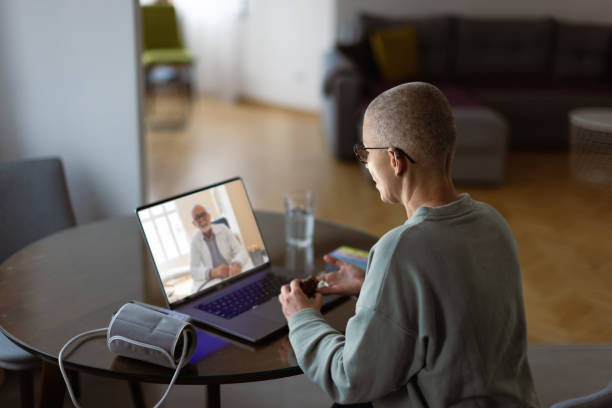The introduction of Principal Illness Navigation (PIN) incident-to-services is outlined in the 2024 Physician Fee Schedule Final Rule by the Centers for Medicare & Medicaid Services (CMS). These are 4 new service codes for the professional services of a physician or billing practitioner under general supervision. Two codes describe PIN services, and 2 codes describe Principal Illness Navigation-Peer Support (PIN-PS) services.
This article provides an overview of the recently introduced PIN services by the Centers for Medicare & Medicaid Services (CMS), including its key components, billing codes, and payment rates. It also discusses how it aligns with the broader goals of improving patient outcomes and reducing healthcare disparities through a more person-centered approach.
Principal Illness Navigation Qualifications
PIN services are significant in supporting patients facing complex, high-risk medical journeys, such as those battling:
- Cancer
- Chronic obstructive pulmonary disease (COPD)
- Congestive heart failure
- Dementia
- HIV/AIDS
- Severe mental illness
- Substance use disorder
PIN-PS supports patients with a serious, high-risk behavioral health condition that is expected to last at least 3 months. The condition puts the patient at significant risk of:
- Hospitalization
- Nursing home placement
- Acute exacerbation or decompensation
- Functional decline or death
In essence, the condition must be complex enough to necessitate a tailored care plan, frequent treatment modifications based on monitoring, or a significant level of caregiver support and involvement.
PIN Core Objectives
The core objective of PIN services is to provide a person-centered approach that prioritizes unique individual needs and goals. Additionally, PINS empowers patients and caregivers to navigate the intricate healthcare landscape effectively for timely access to appropriate care and resources.
Leveraging technology and telehealth solutions can facilitate seamless communication and collaboration between patients, caregivers, and healthcare providers, optimizing care delivery. Additionally, providers can offer comprehensive support beyond traditional healthcare settings by integrating PIN services into remote health services. Understanding the intricacies of PIN services creates new avenues for enhancing patient care and outcomes with telehealth.
The following section provides an in-depth look at Principal Illness Navigation’s core components.
5 Key Components of Principal Illness Navigation Services
Incorporating PIN services into RPM services enhances the scope of remote care management and aligns with the broader goals of improving patient outcomes and reducing healthcare disparities. By embracing innovation and adopting a patient-centered approach, RPM professionals can contribute to advancing healthcare delivery and positively impact the lives of individuals facing serious, high-risk conditions.
Key components of PIN services include:
- Person-Centered Assessment: Conduct thorough assessments to understand the patient’s life story, strengths, needs, goals, and preferences, including cultural and linguistic factors, and address unmet needs.
- Care Coordination: Involves coordinating services from various healthcare providers and community-based organizations, facilitating care transitions, and ensuring continuity of care.
- Health Education: Providing tailored health education to patients and caregivers, empowering them to actively participate in medical decision-making and disease management.
- Self-Advocacy: Building patient self-advocacy skills to navigate the healthcare system effectively and engage with healthcare professionals and community resources.
- Social and Emotional Support: Offering social and emotional support to help patients cope with their condition and adjust daily routines to meet treatment goals.
- Peer Support Services: Peer support specialists provide additional assistance and mentorship tailored to the specific needs of patients with behavioral health conditions.
Billing codes for Principal Illness Navigation Services
Patients require an initial healthcare visit before starting principal illness navigation services. After the initial visit, patients can receive monthly navigation services for the remainder of the year as needed. To receive services beyond one year, an annual re-evaluation visit is required.
Furthermore, implementing PIN services involves using specific Healthcare Common Procedure Coding System (HCPCS) codes defined by CMS. These codes delineate the reimbursable activities associated with PIN services and provide a standardized framework for billing and documentation for use by certified or trained auxiliary personnel under the general supervision of a healthcare provider.
While CMS covers several care management services, it states that those services are “focused heavily on clinical aspects of care rather than social aspects and are generally performed by auxiliary personnel who may not have lived experience or training in the specific illness being addressed.” In 2024, chronic care management and behavioral health billing codes will be reimbursed at higher rates. In the future, understanding how billing for PINS services can be coordinated alongside billing for chronic care management and behavioral services will be important.
PIN Codes and Payment Rates
The Billing codes for Principal Illness Navigation services include:
- G0023: Principal Illness Navigation services by certified or trained auxiliary personnel under the direction of a physician or other practitioner, including a patient navigator or certified peer specialist; 60 minutes per calendar month. The average national payment rate is $79.25.
- G0024: An additional 30 minutes per calendar month for Principal Illness Navigation services, listed separately from G0023. The average national payment rate is $49.45.
The following codes are billed for peer support by certified or trained auxiliary personnel for patients with behavioral health concerns:
- G0140: Principal Illness Navigation services – Peer Support by certified or trained auxiliary personnel under the direction of a physician or other practitioner, including a certified peer specialist; 60 minutes per calendar month. The average national payment rate is $79.25.
- G0146: An additional 30 minutes per calendar month for Principal Illness Navigation services. Peer Support, listed separately from G0140. The average national payment rate is $49.45.
These codes specify the duration and nature of services, ensuring clarity and consistency in billing practices. By adhering to these codes, qualified healthcare professionals can accurately document and bill PIN services, facilitating reimbursement and promoting adherence to regulatory guidelines.
As this is the first year for PIN reimbursement, chronic care management companies will want to decide which billing option of PIN or CCM codes works best for their organization at this time.
Understanding Principal Illness Navigation
Introducing Principal Illness Navigation (PIN) services by the Centers for Medicare & Medicaid Services (CMS) in the 2024 Physician Fee Schedule Final Rule presents a new opportunity to enhance patient care and outcomes. This approach aims to empower patients and caregivers to navigate the complex healthcare system more effectively, ensuring timely access to appropriate resources and support. As the industry adapts to new value-based care initiatives like PIN services, healthcare providers and organizations are eager to understand how billing for PIN services will work in conjunction with existing chronic care management and behavioral health billing codes.
Reconciling these various billing mechanisms and determining the optimal approach for each patient population will be crucial in delivering comprehensive, coordinated care and managing Medicare reimbursement. The introduction of PIN services highlights the industry’s shift towards a more patient-centered, value-based care model, and it will be important for stakeholders to adapt their processes and systems to incorporate these new services effectively.
Are you ready to introduce your healthcare partners to a better remote patient monitoring experience? Book a free demo to see the difference Tenovi solutions can make.






